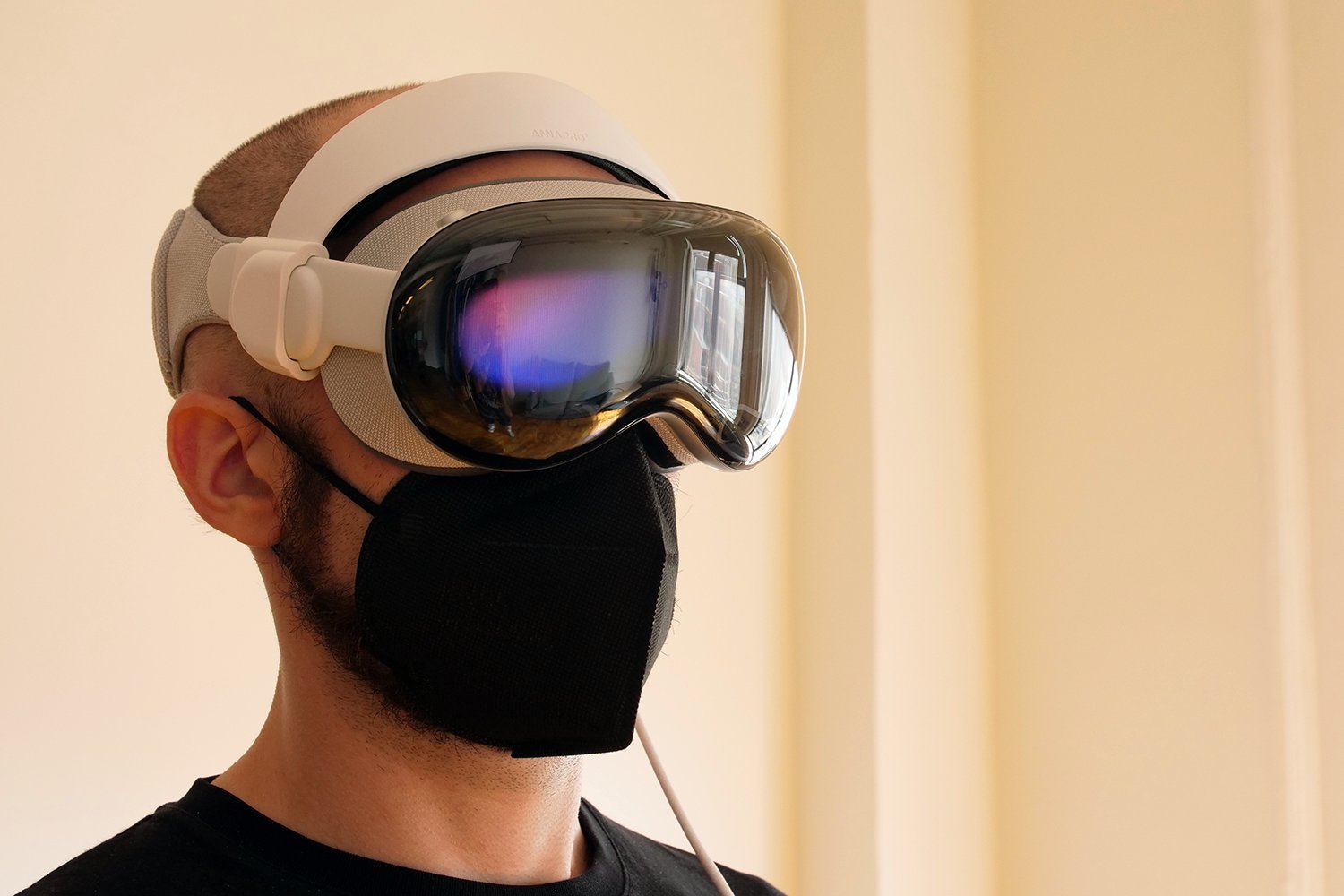Even with the updates, Apple’s $3,500 Vision Pro still feels like a tech demo for something greater. If anything, the current beta for the upcoming visionOS 2 shows us Apple is still in uncharted territory. It’s a better headset with the beta update. New gestures make it more responsive and far easier to navigate. Unlike those who say the Vision Pro is missing apps (there’s a current lack of content, to be sure), I think this device would truly start to sing if Apple expands the usability of it with your more typical Apple devices.
I’m tired of the talk that “killer apps” sell hardware. Cool applications might sell a product, but versatility prevents users from abandoning it. If you drop hundreds or—in the Apple Vision Pro’s case—thousands of dollars on a single device, it better do more than one thing. You can argue that this describes video game consoles in a nutshell, but I’d say most don’t buy an Xbox Series X and PlayStation 5 to play one game. If I buy a $3,500+ gaming laptop, you’re damn right I’m going to use it for more than playing Alan Wake II on high settings.
I’ve been using Apple’s AR headset for most of my daily tasks as long as my head can support it. The Vision Pro, with the update, feels tighter and more accurate with what was already best-in-class hand and eye tracking. It’s still the same headset. I’m waiting for more gestures beyond pinching and dragging that make it feel like I’m truly interacting with the VR space I’m in. We’re not in the AR promised land, not by a mile. We’re still gearing up for our full review of the headset six months after release when Apple fully deploys visionOS 2. We’ll see what may change with a full release.
The visionOS 2 update is gearing up for release later this year. While there’s no word on the release date, we expect it could drop in September with the anticipated iPhone 16 alongside iOS 18, iPadOS 18, and macOS Sequoia.
VisionOS 2 Makes Using The Headset Easier to Navigate
The current beta introduces features that make it easier to access your apps through gestures. All you do is hold open your hand, then look and tap on the icon that pops up. Flip your hand over, and you can access the control center. This feature is similar to one Meta Quest 3 has had with recent updates. Yet, it’s still far better when you tap the digital crown to bring up your apps or look at the top of the screen for the control panel.
Many of the quality-of-life improvements help ease pain points when looking through a narrowed headset’s field of view. It’s now easier to spot your keyboard if your hands hover near it when working in a spatial environment. You can also connect a first—or third-party mouse to Vision Pro for easier navigation. Just with a Mac trackpad, it’s pretty easy to navigate without gestures in most apps. If I’m sitting at a desk, I occasionally prefer it to tapping or swiping.
The next big change important for any household is treating the Vision Pro as a computer. Previously, you could set up a guest account for an additional user, but they would need to go through the entire setup process every time they wanted to use it. Now, the Vision Pro saves that guest profile to unlock with just their eyes. As long as they keep using it within 30 days of the last time they picked it up, the primary account won’t have to do the song and dance over again.
The current iteration of OS 2 still doesn’t have promised features like the ability to blow out your mirrored Mac display to a massive, curved screen equivalent to “two 4K monitors.” It’s a feature that probably won’t be here in time for the first visionOS 2 release, which is a shame since it reminds me first of the Spacetop G1 laptop and AR glasses combo. That $1,900 has the added benefit of not requiring you to strap into a massive headset, though I desperately want to see what it looks like with AVP’s micro-OLED displays.
Does visionOS 2 Truly Change How or Why You Use the Vision Pro?
The small touches make a big difference when you want to use such a big, expensive AR headset. The Vision Pro now lets users rearrange their apps in the Home View. You can add non-AVP native apps to the Home View for easier access. It’s something that should have been there to begin with.
The increased usability is one thing, but Apple’s been pushing spatial photos more with the new update. Just as promised, you can transform pretty much any photo into a 3D-like Spatial Photo. The effect is especially good when there’s a photo with depth of field. I’ll admit to a pang of longing when I turned a photo of my friend’s dog, Remus, into a 3D photo. Remus passed away a few months ago. His snout will be remembered from now until the end of time, not just because I made his long nose spatial.
There are a limited number of passive viewing experiences on AVP, and the headset has been getting more since its release. Apple obviously invested a lot of money in 360-degree productions like the immersive Wild Life series. Yes, those short films are truly remarkable for how intimate you feel with scenes of rhinos and elephants, though there are currently only seven Apple Immersive experiences on the AppleTV app. Once you’re done with them, you probably won’t go back.
Reviewers made a big deal out of the lack of Netflix or YouTube native apps on Vision Pro at launch. The new beta introduces a big picture mode for streaming on either app full screen through Safari. It generates the big window you see on native apps like Disney+ or Paramount+, and it looks good even if you’re not technically achieving 4K visuals (which you wouldn’t get anyway unless you pay for subscriptions for both).
There’s a Big Thing Apple’s Still Missing: Better iPhone Mirroring
Disney+ might have some specific VR environments for subscribers, but you can’t use most of your apps like Apple’s main environments. Some more recent games, including Warped Kart Racing, or diversions like Marvel Studios’ What if?… and Synth Riders, are worth trying, but there are too many titles that are merely 3D renditions of mobile games. You’re better off streaming games or delving into nascent Vision Pro emulation for more substantial titles.
So, we inevitably come back to base utility. Apple is marketing this device as a computer, and that’s clearly how it’s meant to be used. Standing up or sitting down doesn’t matter. You browse the internet, stream videos, and type out emails and Slack messages with a connected keyboard; it’s everything you do on your Mac. As if to exacerbate this, I couldn’t imagine using the Vision Pro without the ability to mirror my Mac screen.
MacOS Sequoia lets users mirror their iPhone on the screen and allows you to control it with the Mac cursor. This works so well already for quickly accessing restricted apps or manipulating your phone, even in beta form. Macs have gotten easier to use on AVP. The same can’t be said for iPhones. With visionOS 2, you can mirror your iPhone to the headset once you enable AirPlay Receiver in AVP settings. You still can’t control the phone this way, and the headset will make it impossible to use your face to unlock it.
I’m desperate to try the wraparound Mac mirror display on AVP. Once that’s around, it will make a big difference in how users can get more out of their headsets so long as they stick to the warm confines of Apple’s Walled Garden. Imagine, then, if Apple did the same thing with iPhone or iPad. What if it magnified the usability of your other Apple devices? That sounds like something an Apple fan could get behind, though perhaps at a much more sensible price point.











Leave a Reply